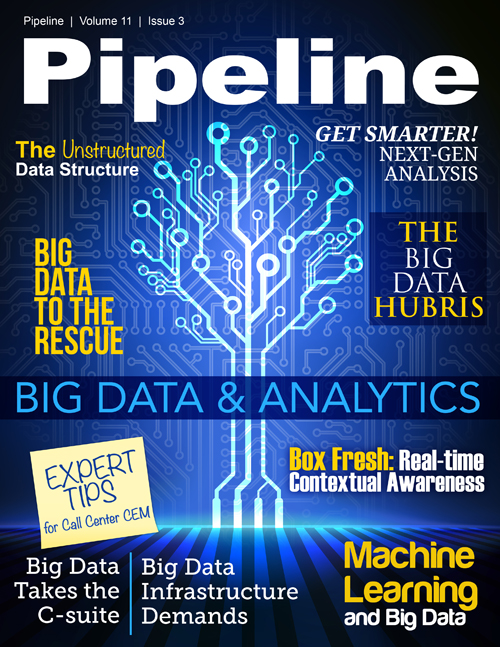Expert Tips: Using Big Data to Improve Customer Experience in the Contact Center
Predictive analytics is an emerging trend that has already made strides in drastically improving business results for a variety of industries. For contact centers, that means the power to know how to increase the effectiveness of your agents, decrease problems related to turnover and incorrect agent staffing, and make your customers happier overall.
In selecting the best product to perform predictive analytics on your data, there are three important factors to consider: clustering, stability and variance analysis, and what-if analysis and simulation modeling.
- Clustering allows you to discover commonalities within your data, such as optimal levels of performance for agents and behavioral propensities for customers
- Stability and variance analysis can be used to evaluate the data set size and factors necessary to create dependable predictive models.
- What-if analysis and simulation modeling allow for testing of various hypotheses to determine which factors most impact your business outcomes. This includes scenario analysis to optimize how calls are routed, how customers and interaction types are prioritized, and which scripts, offers and resolution approaches are used. Simulation is a very effective tool to quantify the outcomes and ROI of implementing different strategies.
3. Analyze customer engagements across social, web and calls.
Contact center agents utilize as much as 12 different modes of interaction with customers, including call, email, white mail, customer portal, social media, text messaging, forum, mobile business applications, virtual chat, mobile service applications, video and virtual agents.
About CES 2014
Pipeline continues its legacy of bringing together the world’s leading service providers and technology innovators this fall at The 2014 COMET Executive Summit. This exclusive event
gathering Pipeline journalists, Industry Advisory Board (IAB) Members, and key solution providers will be an intimate symposium to shape the editorial direction of Pipeline, gather
priceless input from executive-level service provider experts, and create lasting industry relationships.
Pipeline’s IAB is an exclusive group of service provider and analyst executives who have long-term relationships with Pipeline and have played a role in Pipeline programs, editorial
direction, and provided content over the last decade. This year, Pipeline opens the doors to provide an opportunity to engage directly with a broad cross section of experts who
evaluate, recommend, and purchase communications and entertainment technology (COMET) products and services. Multiple levels of participation provide your company with an exclusive
networking opportunity, tailored to your goals and budget.
The COMET Executive Summit will bring together executives from the world’s leading service provider and technology companies, in a flexible format that is filled with unprecedented
networking opportunities designed to build relationships that can be carried forward to solve issues facing service providers today. Some of the topics planned for discussion
include:
- Networking
- Customer experience management (CEM)
- Big data & analytics
- Exploring cloud offerings
- Enabling new business models
- Delivering and assuring digital services
- Network evolution & virtualization
- Leveraging content
- Network security
For more information, visit
www.pipelinepub.com/info/comet/2014_comet_summit.php
Because communication between agents and customers span such a wide array of systems, it is critical that customer data analytics be applied to each of these 12 channels. According to Richard Snow, Vice President and research director of research firm Ventana, consumers today report an average use of 7.5 of these 12 channels. This is a stark contrast to 10 years ago, when the average number of communication channels used was only two to three. In the future, businesses must continue to take the growing number of communication options into account as they select a system to analyze customer data.
Because customers have access to brands via social media, sites like Facebook, Twitter, LinkedIn, and Instagram are no longer just “social” but also serve a business purpose. They contain an abundance of data regarding what your customers want and how they feel about your products. In order to make use of social media customer data, it is crucial to dedicate resources to managing a social media strategy. Ideally, a business will have a social media manager or team to monitor customer interactions and recommend product improvements.
At the end of the day, Big Data is at your fingertips, and you have the power to use it to improve customer experience in your contact center. By utilizing agent scoring data, applying predictive analytics and analyzing how your customers engage across a multitude of communication channels, you are already on your way to happier customers and a better bottom line.




















